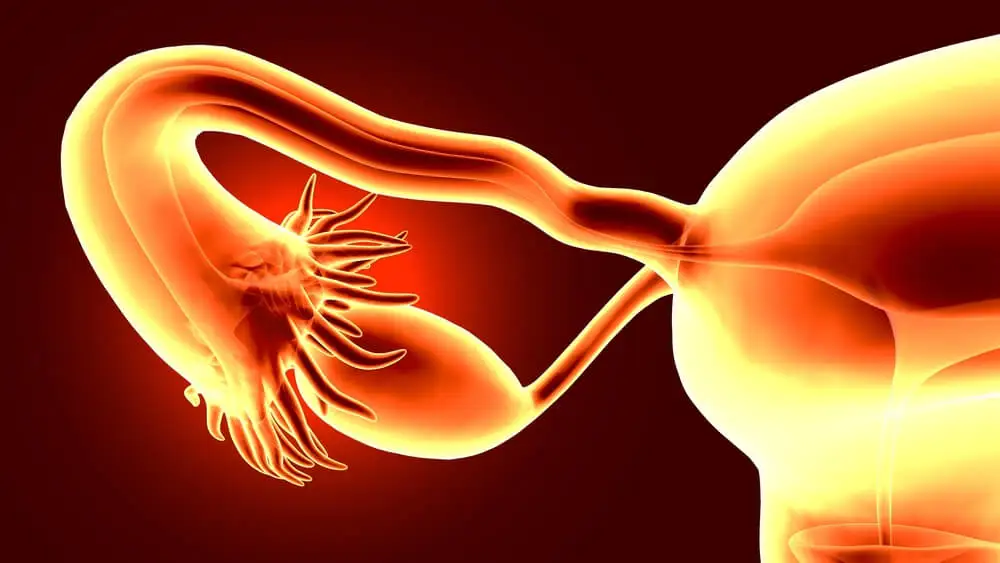Contraceptives in the Postpartum Period: What You Should Know


Reviewed and approved by the nurse Leidy Mora Molina
The puerperium (postpartum period) is the stage immediately after childbirth and it’s very common for there to be many concerns or questions about contraceptives in this period. Many women wonder when or whether they can start to have sex again, and if it’s possible to get pregnant again straight away.
The problem here is that isn’t possible to determine when the first ovulation occurs after childbirth. This varies greatly from one woman to another and also depends on various circumstances.
The postpartum period and contraception
The postpartum period is the stage from the time of the end of childbirth until 40 days after birth. During this period, a woman’s body undergoes major changes in order to return to the state it was in before giving birth. There are also psychological and social transformations.
The infertility stage after childbirth is brief, especially in women who don’t breastfeed. In these cases, fertility is usually reactivated after 3 weeks. In lactating women, it only returns after 6 months.
Non-lactating women almost always have their first ovulation between 45 and 94 days after giving birth. However, cases have also been reported in which ovulation occurred at 25 days. In lactating women, this occurs after the 27th week postpartum.
One problem is that the use of some effective contraceptives in the postpartum period can affect lactation. Therefore, it’s very important to choose a safe method with few adverse effects for the baby.
Get to know more about: How to Deal with Hair Loss While Breastfeeding
What hormonal contraceptives are recommended in the postpartum period?
Hormonal methods are one of the most commonly used options. These contraceptives involve some risks during the puerperium, as they pass into breast milk. There are two types:
- Non-combined contraceptives: These are the ones that only have gestagens. They shouldn’t be used until 6 weeks after birth in breastfeeding mothers. Non-breastfeeding mothers, however, should wait 21 days before starting them.
- Combined contraceptives: These contain estrogens and gestagens. Breastfeeding mothers should only take them from 6 months after giving birth; never in the puerperium. In non-lactating mothers, it’s recommended to wait 3 weeks before starting them.
The postcoital or emergency pill can be used during the puerperium. The precaution is to respect the 21 days after birth.

Other contraceptives in the postpartum period
During the postpartum period, it’s also possible to use contraceptive methods other than hormonal contraceptives. Each of them has its benefits and disadvantages. A woman should choose the one that best suits her circumstances and needs.
Intrauterine Device (IUD)
The intrauterine device is perhaps the most widely used method of contraception in the world. It has a failure rate of less than 1 % per year and 2 % to 6 % after 10 years. Its total duration is between 5 and 10 years.
The IUD can be inserted during the puerperium, at least 4 weeks after birth. It’s also possible to do it during the 48 hours after delivery, but not in the period between 48 hours and 4 weeks.
In this case, it doesn’t matter whether the mother breastfeeds or not. Nor if the delivery was vaginal or by cesarean section.
Read more: Can You Still Get Pregnant With a Progestin Implant?
Barrier methods
Male or female condoms can be used at any time after the lochia has disappeared. Lochia is a bloody discharge that occurs after childbirth and lasts from 2 weeks to 1 month.
LAM Method
The LAM method is also widely used during the postpartum period. It can be initiated after birth and consists of using breastfeeding as a protection against pregnancy.
It’s only useful for the next 6 months and requires two conditions to be met:
- No menstruation
- The baby must be exclusively breastfed
If menstruation occurs, the effectiveness of the method decreases. The same happens when the baby’s feedings decrease. If any of these circumstances occur, another method should be added.
[/atomik-in-text].The efficacy of the LAM method is estimated to be 98%.
Voluntary sterilization
Voluntary sterilization is a definitive method of contraception. It means that it will never again be possible to have children.
The techniques most commonly used to achieve this are tubal ligation and the tubal obstruction method. In the case of men, vasectomy is used.

Choose the method with professional advice
The World Health Organization (WHO) has established some parameters that help to choose the best contraceptive method for each woman. To these guidelines must be added the fact that a woman is in the postpartum period.
The parameters are known as Medical Eligibility Criteria for Contraceptive Use. Each individual must establish whether the method she is using falls into categories 1 and 2. If not, she shouldn’t use it.
The categories are as follows:
- Category 1: the method has no restrictions on use
- Category 2: the advantages of the method outweigh the risks
- Category 3: the risks outweigh the advantages of the method
- Category 4: there’s a major risk that’s unacceptable
The most important thing during the postpartum period is that contraceptives don’t interfere with breastfeeding or with the health of the newborn baby. Generally speaking, non-hormonal methods are the preferred option.
.If there are any doubts or concerns, it is best to consult your doctor.
All cited sources were thoroughly reviewed by our team to ensure their quality, reliability, currency, and validity. The bibliography of this article was considered reliable and of academic or scientific accuracy.
- Rodríguez-Rodríguez, R., Polentinos-Castro, E., Azcoaga-Lorenzo, A., González-Fernández, C., GESTAGAP, G., Rodríguez, R. R., … & Castro, E. P. (2019). Uso de la anticoncepción con solo gestágenos en atención primaria: estudio GESTAGAP. Atención Primaria, 51(8), 479-485.
- Vásquez-Awad, D. (2020). Beneficios de los anticonceptivos orales combinados. Ginecología y Obstetricia de México, 88(S1), 47-55.
- Fernández, M. D. L. D. V., González, R. G., Lázaro, G. A., & Bautista, B. E. (2015). Uso de anticonceptivos durante el puerperio y la lactancia materna. Metas de enfermería, 18(4), 4.
This text is provided for informational purposes only and does not replace consultation with a professional. If in doubt, consult your specialist.








